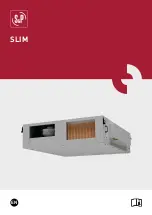
3
1.0 APPLICATIONS
1.1 PURPOSE:
Self Retracting Lifelines (SRLs) are designed to be a component in a personal fall arrest system
(PFAS). Figure 1 illustrates SRLs covered by this instruction manual and their typical applications. They
may be used in most situations where a combination of worker mobility and fall protection is required (i.e.
inspection work, general construction, maintenance work, oil production, confined space work, etc.).
1.2 STANDARDS:
Your SRL conforms to the national standard(s) identified on the front cover of these
instructions. Refer to local, state, and federal (OSHA) requirements governing occupational safety for
additional information regarding Personal Fall Arrest Systems. Refer to the following national standards on fall
protection:
ANSI Z359.0
Definitions and Nomenclature Used for Fall Protection and Fall Arrest
ANSI Z359.1
Safety Requirements for Personal Fall Arrest Systems, Subsystems, and Components
ANSI Z359.2
Minimum Requirements for a Comprehensive Managed Fall Protection Program
ANSI ANSI A10.32 Personal Fall Protection use in Construction and Demolition
1.3 TRAINING:
This equipment is intended to be used by persons trained in its correct application and use. It is the
responsibility of the user to assure they are familiar with these instructions and are trained in the correct care and use
of this equipment. Users must also be aware of the operating characteristics, application limits, and the consequences of
improper use.
2.0 LIMITATIONS & REQUIREMENTS
Always consider the following limitations and requirements when installing or using this equipment:
2.1 CAPACITY:
SRLs are designed for use by one person with a combined weight (person, clothing, tools, etc.)
not exceeding 310 lbs (140 kg) and at least 75 lbs (34 kg).
At no time shall more than one person connect to a single SRL for fall arrest applications.
2.2 MAXIMUM ARREST FORCE AND MAXIMUM ARREST DISTANCE:
SRLs documented in this instruction meet
the following Arrest Force and Arrest Distance maximums:
Weight of Worker
Up to 310 lbs (140 kg)
Average Arresting Force
900 lbs (4.0 kN)
Maximum Arresting Force
1,350 lbs (6.0 kN)
Maximum Arrest Distance
42 in (1.07 m)
2.3 ANCHORAGE:
Anchorages selected for fall arrest systems shall have a strength capable of sustaining static
loads applied in the directions permitted by the system of at least:
1.
5,000 lbs. (22.2 kN) for non-certified anchorages, or
2.
Two times the maximum arresting force for certified anchorages.
When more than one fall arrest system is attached to an anchorage, the strengths set forth in (1) and (2)
above shall be multiplied by the number of systems attached to the anchorage.
FROM OSHA 1926.500 AND 1910.66:
Anchorages used for attachment of personal fall arrest systems shall be
independent of any anchorage being used to support or suspend platforms, and capable of supporting at least 5,000 lbs. per
user attached, or be designed, installed, and used as part of a complete personal fall arrest systems which maintains a safety
factor of at least two, and is under the supervision of a qualified person.
2.4 RESCUE PLAN:
When using this equipment, the employer must have a rescue plan and the means at hand
to implement it and communicate that plan to users, authorized persons, and rescuers.
2.5 INSPECTION FREQUENCY:
SRLs shall be inspected by the authorized person
1
or rescuer
2
before each use.
Additionally, inspections shall be conducted by a competent person
3
other than the user, and by a factory
authorized inspection entity. The competent person shall use the Inspection Schedule (Table 1) to determine
appropriate inspection intervals. Inspection procedures are described in the
“Inspection Checklist”
(Table 2).
Results of the Competent Person inspection should be recorded in the
“Inspection and Maintenance Log”
on
the back pages of these instructions.
1 Authorized Person:
A person assigned by the employer to perform duties at a location where the person will be exposed to a fall hazard.
2 Rescuer:
Person or persons other than the rescue subject acting to perform an assisted rescue by operation of a rescue system.
3 Competent Person:
An individual designated by the employer to be responsible for the immediate supervision, implementation, and monitoring of the employ-
er’s managed fall protection program who, through training and knowledge, is capable of identifying, evaluating, and addressing existing and potential fall hazards,
and who has the employer’s authority to take prompt corrective action with regard to such hazards.
Содержание Protecta series
Страница 13: ...13 Figure 14 Labeling...


































